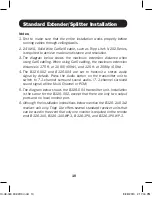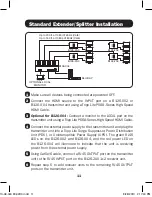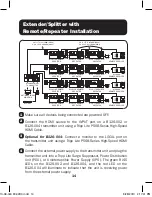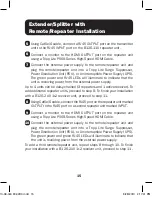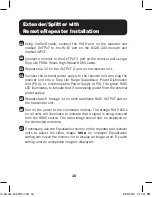
18
5
What type of cabling are you using?
Inferior cabling can result in poor
performance, so it is important that you use cables that support the video
resolution you are trying to obtain. To achieve maximum distance and
resolution, 24 AWG solid wire UTP cable must be used. Tripp Lite’s N202-
Series Cat6 Cables are made with 24 AWG solid wire, as are the N022-
01K-GY (Cat5) and N222-01K-GY Bulk Cables. Also, the HDMI cables you
are using must support the resolution you are trying to obtain. Inexpensive,
low quality HDMI cables may not support the maximum resolution. It is
recommended that you use Tripp Lite’s P568-Series High-Speed HDMI
Cables that are pre-tested to work with all B126-Series extender products.
6
Test your cables to ensure they are working properly.
Try
connecting your HDMI cables between a source and monitor that
you know works to see if the cable is functioning. For Cat5e/6
cabling, connect it between a computer and a network to verify that it
establishes a network connection.
7
Do you have any patch panels or other devices in between
the transmitter, repeater, and receiver units?
Tripp Lite’s HDMI
over Cat5 extender products are designed to be connected directly
from the transmitter to the repeater and/or receiver via UTP cable.
The more connection points that are in between the source and the
remote monitor, the more likely signal degradation will occur, causing
poor performance. If you have a patch panel or if another device is
being used, it should be removed from the installation.
8
Check your cabling for any damages that may have occurred
during installation.
If a cable connector is loosened as a result of being
pulled through ceilings/walls, or the cable jacket is damaged, causing the
wiring to be exposed, you will not achieve maximum performance.
9
Are the transmitter, repeater, and/or receiver located in an area
that exposes them to higher temperatures?
If the product is
overheated, it will not function properly.
Troubleshooting
13-08-043 93-32D0.indd 18
8/28/2013 2:17:41 PM







